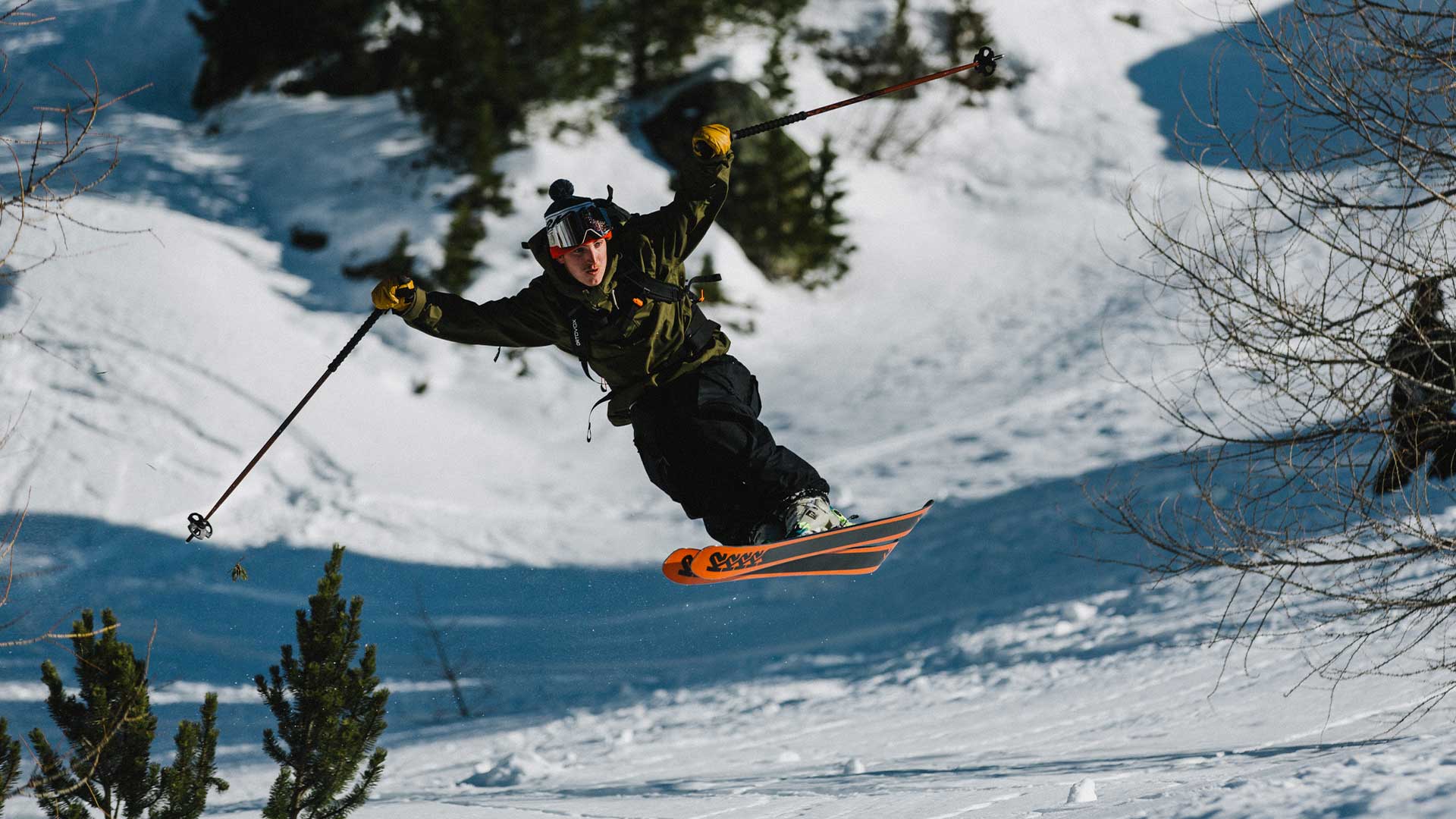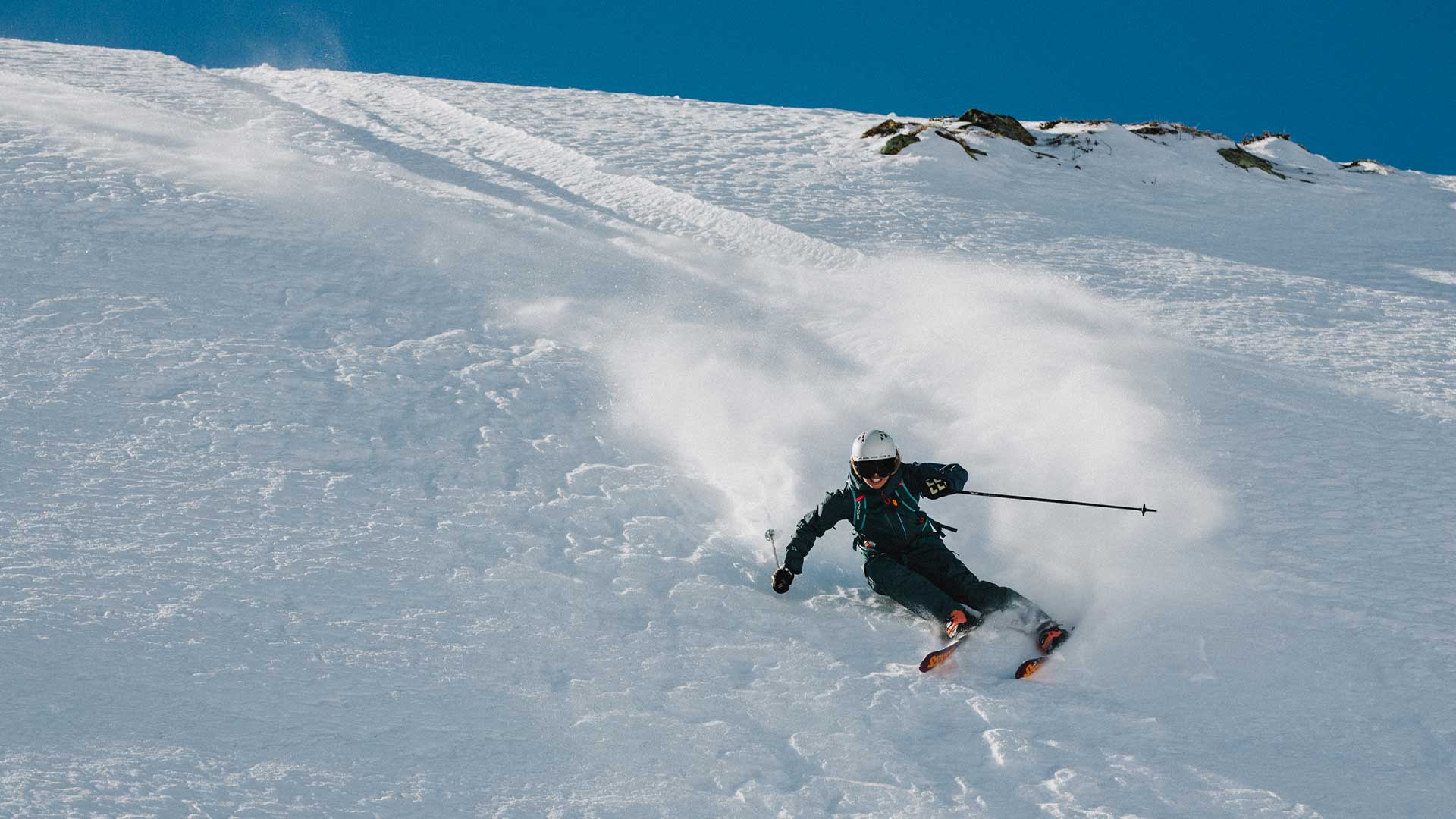Learning how to ski freeride and big mountain terrain opens up, we’d argue, the purest form of skiing; free from the confines of piste markers, race gates, or man-made features. The mountain is your canvas, and the skis are your tools for drawing the most exciting line you can and having as much fun as possible on the way down.
“It should look and feel like the most fun skiing you ever do”
Embracing all aspects of skiing, freeriding puts an emphasis on fast but controlled technique off piste. Using the ridges, gullies and rolls of the natural terrain, we can ski or ride a creative route (or line) down a mountain face. The best freeriders not only ski well, but instinctively manage all snow conditions and incorporate air-time, cliff drops, tricks, and spins, with solid landings and stomp-worthy style. Freeriding is all about finding your flow and moving with the mountain. It should look and feel like the most fun skiing you ever do.

How To Start Freeriding
If you can ski or snowboard, then you can freeride. You don’t have to be on the steepest and gnarliest big mountain slopes. It’s all about working with the terrain you’ve got and letting your imagination take over.
Freeriding could just mean blasting around and seeing what terrain comes your way, but if you want to improve your freeride skills, take a look at the judging criteria from the Freeride World Tour – the biggest and most prestigious freeride competition in the world. Riders are judged on their line choice, control, fluidity, air and style, and their overall technique. We’ve broken these down into the following steps for getting started:
- Choosing Your Line: First up, you need a mountain face. That could just be the terrain under the chairlift or off the side of a piste, or it could be somewhere more remote. The idea is to scout your route from below first. Choose a line down the mountain and then look for obvious features that will guide you on the way down, like gullies, rocks or trees. It takes lots of practise to get good at remembering and finding the line you chose at the bottom, but we’ve got a few tips below to help you.
- Stay in Control: Control is key for success (and survival). There are more obstacles and dangers off piste, so make sure you stay within your abilities, maintain control of your skis, and stay on your feet. The idea is to make the difficult, look easy.
- Fluidity: A continuous performance from top to bottom of a line not only looks great but feels great too. Try to ski your line without stopping, hesitating or unnecessarily traversing. It’s all about finding flow.
- Air and Style: If you’re ready to incorporate air-time think about how you can use the terrain. Look out for rocks, wind lips and cliffs, and work out how to include them in your route. How big can you go and how well can you link them together? (Remember most cliffs look a lot smaller from below than they really are up close.) If you can throw in a trick, that’s all the more style points.
- Tactics and Technique: The stronger your ski or riding technique the easier you’ll find it to deal with different terrain and snow conditions. Keep considering how you could improve your line… How was your sluff management? Could you have cranked a carve where you started to side slip? Were you in the backseat? All the skills you learn on piste will help you perform better off piste too.





